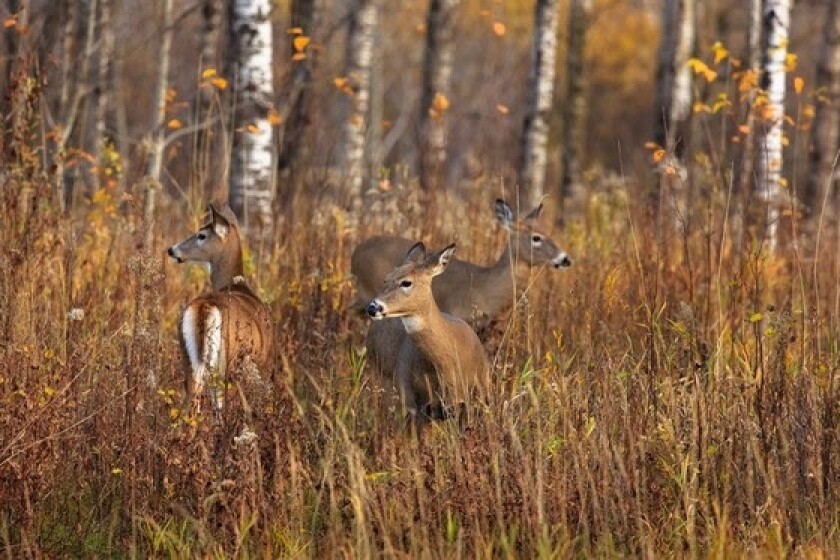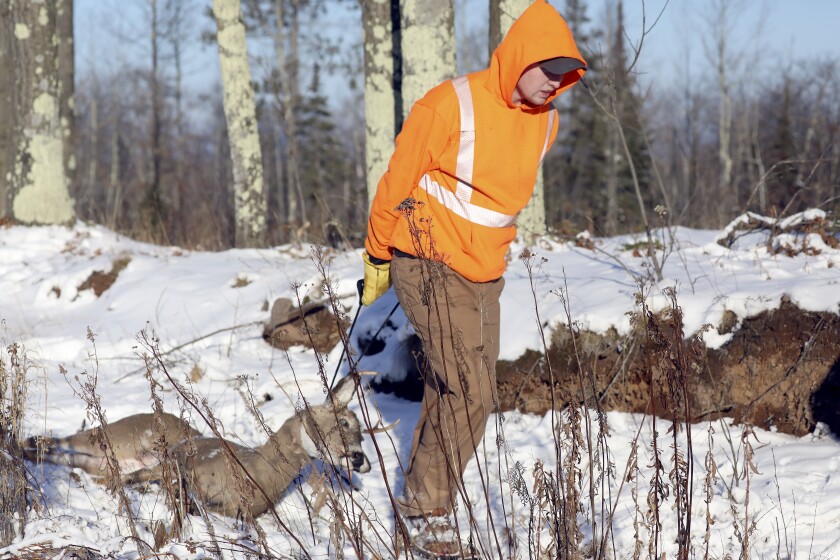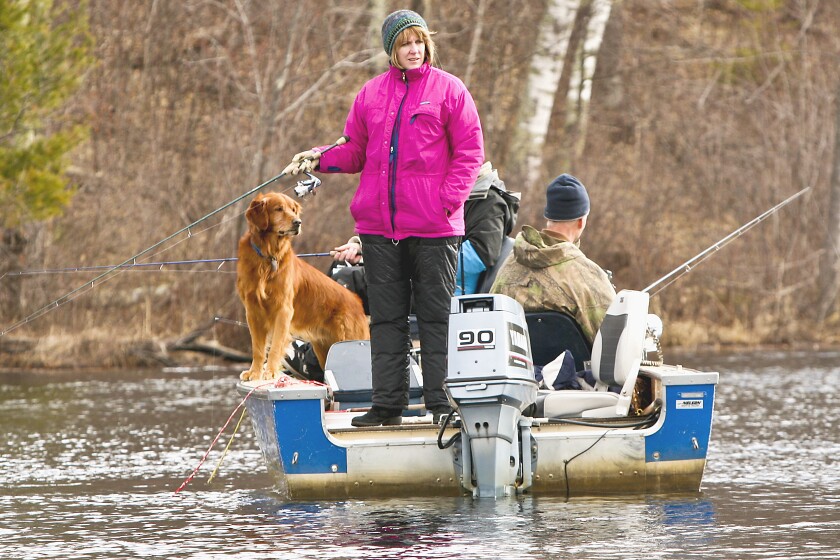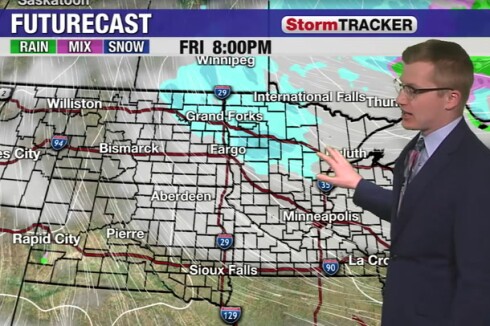MADISON — Northern Wisconsin’s deer herd, just like in northern Minnesota, has been down for the past decade or more, and Wisconsin lawmakers are poised to take action to prop it up, imposing a bucks-only mandate on the state’s northern tier of counties for the next four hunting seasons.
The proposal would affect the northern forest deer-hunting zone in Wisconsin, which includes all or part of 20 counties.
“Deer hunting has been a tradition for generations in northern Wisconsin. But those traditions have been thrown by the wayside because the population of deer has been decreasing for years,’’ said Rep. Chanz Green, R-Grand View.
The state Assembly passed the proposal on Feb. 22, and the Senate is set to vote on it on March 12, said state Sen. Romaine Quinn, R-Cameron, the bill’s chief Senate author.

“It’s controversial. There's a lot of support. There’s some concern. But I think one thing we can all agree on is that whatever we are doing now is absolutely not working to bring the deer herd back,’’ said Quinn, who represents much of Northwestern Wisconsin, including Douglas County.
ADVERTISEMENT
The bill has been amended from its original version to allow hunters age 16 and under to take one antlerless deer each year but would prevent most adult hunters from taking an antlerless deer through 2027.
Supporters say protecting more does and fawns will help rebuild the herd faster. The bill would still allow hunters to take one buck with a rifle or muzzle-loading gun in addition to a buck harvested with a bow or crossbow.
“We can't control the weather. We hope to be able to control our predator population sometime soon, but wolves remain protected right now. … The one thing we can control is how many deer hunters kill, and that’s what we are doing,’’ Quinn told the News Tribune.

In recent years the number of antlerless permits varied by each county, a cooperative decision set largely by the volunteer, citizen-based county deer advisory councils and local Department of Natural Resources wildlife managers.
In most cases, the councils had been reducing antlerless permits as deer numbers have been below goals and below the historic high levels of the early 2000s, and increasing permits in years deer numbers were up. Only Iron County last year offered no antlerless tags, while hunters in most counties have seen a few hundred antlerless tags each season for hunters on private property, such as agricultural areas where more deer are present.
Critics of the legislation say lawmakers should let the local deer advisory councils decide what’s best for local deer herds and local hunters.
"They made this decision before any of our councils could have our spring meetings and respond. It's pretty much taking everything we can control away from us," said Jarid Rankila of Poplar, the alternate chair of the Douglas County Deer Advisory Council. "I don't think this is the right fix for every county. ... Four years is a long time. A lot can happen over that time with deer numbers and predators and habitat. A lot of people are going to be unhappy about this."
But Quinn said the advisory councils have been over-influenced by people who want to take more deer, such as foresters and farmers who are wary of deer damage to crops and trees. Proposals to increase antlerless permits in 2023 advanced in most of the northern counties, he noted.
ADVERTISEMENT
“We have (councils) that keep issuing doe tags in counties where we have no does,’’ Quinn said.
Rep. Angie Sapik, representing the 73rd Assembly District in Northwestern Wisconsin, did not respond to a request to comment on the bill that she is an author of.
Quinn said he expects additional legislative moves in future sessions to bolster the northern deer herd.
“A lot of people have other ideas for the deer herd, and we will take a look at those,’’ he said. “Obviously, a key factor is reinstating a wolf hunt as soon as we can when that issue gets resolved at the federal level.”

DNR officials say they will not comment on the proposed legislation. But wildlife officials have said for years now that the northern region simply can’t support the unusually high deer population seen 20 years ago for many intertwined reasons. Habitat, namely older forests and fewer farms, has changed, winters got snowier, predator numbers have increased and northern deer have reached a new but lower “normal” population.
The number of northern deer is still equal to or above most decades in the 20th century but well below records of the early 2000s. Wisconsin DNR wildlife officials have said the state has seen a huge change in deer populations in recent decades, a shift that now has more deer in the southern half of the state than the north. That’s in large part due to more nutritious agricultural crops, along with milder winters, in the south.
While the statewide population of white-tailed deer has rebounded in recent years, the numbers have been stagnant or down across the far north. The DNR reported that hunters killed 14.7% fewer bucks in the northern forested region in 2023 compared with the five-year average. The doe harvest in the region was down 27.2%.
But the northern deer herd has been down for more than a decade, especially since harsh winters in 2013 and 2014.
ADVERTISEMENT
“Hunter expectations got so high in the early 2000s when we had the highest deer numbers we have ever had,” said Greg Kessler, DNR wildlife manager in Douglas County, in a November interview with the News Tribune. "We will probably never see that again. ... But we still have pretty good deer numbers right now compared to historic levels."
Jeff Pritzl, Wisconsin DNR deer program specialist, said in November that the state likely will never see a harvest of 600,000-plus deer as occurred in 2000 (including archery and all gun seasons), even if there are as many or more deer on the ground statewide now. There are simply far fewer hunters — the state is losing 1%-2% of deer hunters each year — and remaining hunters appear less willing to take multiple deer each season.

How unusual was that peak deer period? In 1999, there was a record firearms harvest of 402,204 deer. In 2000, the harvest jumped to a new record 528,494. With 694,712 licensed gun hunters, their success rate was an astonishing 76%. By comparison, in the 43 years from 1966-2009, the average success rate for gun hunters was 37%.
“I cannot imagine that we will ever see the peak harvest of 600,000-plus deer again,” Pritzl said in November. "That occurred under rather unique circumstances and was never going to be sustainable. I think if we see a harvest of 400,000 in the future, that would be exceptional and will likely only occur if we see some rule changes that enhance antlerless harvest.”















